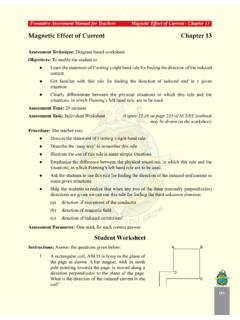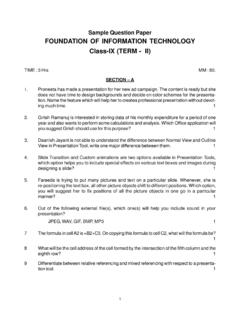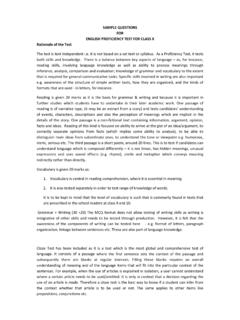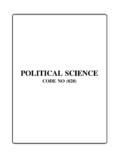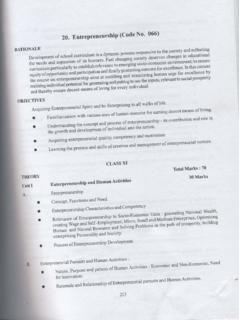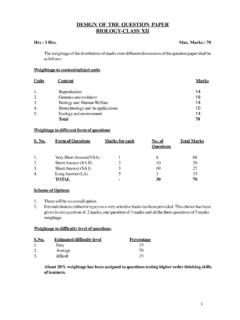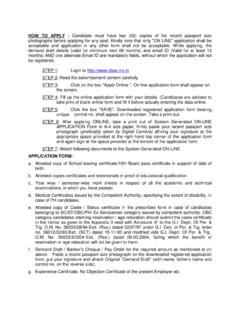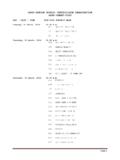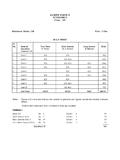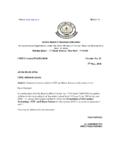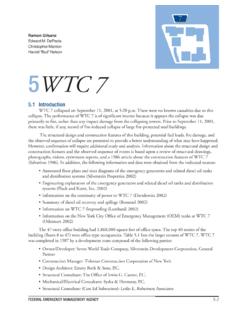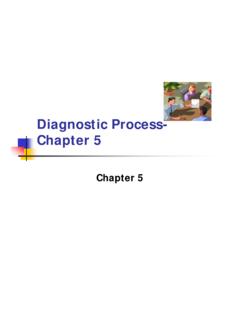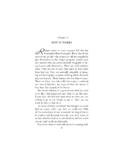Transcription of Chapter 5
1 Techniques and Tools of EvaluationTools and techniques are required to gather information. These should be valid, reliable and of gathered information needs to be given in numerical scores, grades as well as in qualitative terms. Judgement should be made not just on scholastic aspects but also on co-scholastic aspects which depend to a large extent on the learning ambience and learning culture of an far as interpretation is concerned, attainment can be mearsured in terms of three levels. First is with reference to the learner himself/herself and the current status of progress. The learning gaps need to be identified and marked upon.
2 The second level is to identify the status of the learner with reference to his/her peer group. (Percentile Rank)The third level is with reference to the criteria. The criteria means the expected level of learning keeping in view the required evaluation tool is a means of appraisal scientifically designed to evaluate or measure what is required to be evaluated or measuredIt is usedIt is usedThey are usedThey are used These are used to assessto classifyto measure theto assess theto measure past behaviouropinionspotentialexpression ofin numericalof the students. andperformance the inner terms the judgementsand specialfeelings ofattainment of regardingability ofindividualsstudents insituations, objects subjects.
3 Factors need to be considered while using a tool: BalanceObjectivity DiscriminationRelevance FairnessValiditySpeedReliabilitySpecific ToolsAnecdotalRatingAptitudeInventoriesT eacher MadeRecord Scale and standarisedTests Chapter 5 Chapter 5CC69 Continuous and Comprehensive EvaluationTechniques of Evaluation consist of test and other items for measuring growth in particular outcomes of learning. Tools are the instruments used for measuring the learning outcome such as question papers, observation-schedules, rating scale, checklists etc. For example, while observation is a technique a checklist is a can be best collected about children in 'natural' settings.
4 Some information is based on teachers' observations about learners in the course of teaching. Other information is based on planned and purposeful observation of students on of Observation Concerns Regarding Suggestions for implementation of Observation Various aspects of personality development can be assessed through be used to assess individuals as well as can be made during varying time of child's performance/knowledge is based on an 'on-the-spot record'.Over time, detailed observations of behaviour as well as interests,challenges,-patterns/trends emerge which allow teachers to create a comprehensive picture/view of the arriving at inferences/interpretations or jumping to conclusions.
5 It is important to take down more than what is actually on the skill of the observer which determines 'what' is sensitivity and unobtrusiveness in the way the observation is to be made over a period of time, across different activities and details that not only describe the actions but reveal how a child feels about what she/he is doing, details on how she/he is doing something as well as when she/he does it, the quality of her/his interrelationship with people and materials, and what he/she says comments about the child's behaviour in parentheses based on processes which can be inferred at a later point of and Comprehensive Checklists for observation in various subjects areas: Using a Checklist for Observation in Observation In Social Science using a Checklist( Debate)Does the child have appropriate knowledge of the content?
6 Yes / NoDoes the child put forth an argument convincingly?Yes / NoDoes the child speak fluently with proper diction and pronunciation?Yes / NoIs the child able to contradict a given point?Yes / NoDoes the child take criticism positively?Yes / No( Group Discussion)Does the child exhibit Leadership skills?Yes / NoDoes the child live up to the role assigned to him during a role-oriented discussion?Yes / NoDoes the child have content knowledge?Yes / NoHow well does the child put forth his views?Yes / NoDoes he show respect to the peer group?Yes / NoDoes he have proper communication skills?
7 Yes / NoDoes he show sensitivity towards environment?Yes / NoDoes he exhibit proper body language while interacting ?Yes / NoDoes he raise relevant points?Yes / NoDoes he give fair chance to others' for their views?Yes / No(Group discussion on the situation given)Does the child have appropriate knowledge about the situation?Yes / NoDoes the child possess understanding and creative skill ?Yes / NoIs the child able to provide suitable solutions to the related problems and contemporary issues?Yes / NoDoes the child show his leadership skills and take criticism positively during group discussion?
8 Yes / NoCC71 Continuous and Comprehensive Observation In Science using a Observation In Maths Using A Checklist( Experiments)Is the child inquisitive about different phenomena around us?Yes / NoCan the child draw inferences from an activity?Yes / NoCan the child think logically and rationally?Yes / NoIs the child able to set up the right apparatus?Yes / NoIs he able to use the appropriate technique to perform the experiment?Yes / NoIs the child able to use the material and apparatus correctly?Yes / NoIs the child able to achieve the desired result?Yes / NoIs the child able to interpret and derive the conclusion?
9 Yes / NoIs the child able to apply theoretical knowledge in practical situation?Yes / NoDoes the child exhibit in depth knowledge during viva?Yes / NoIs he able to answer the questions correctly?Yes / NoDoes the child have good understanding of the concepts?Yes / NoHas the child worked with precision, neatness and accuracy?Yes / NoCan the child interpret word problem into mathematical form?Yes / NoCan the child think logically and rationally?Yes / NoCan the child interpret data?Yes / NoIs the child able to solve problems?Yes / NoDoes the child solve problems accurality?Yes / NoThese are undertaken over a period of time and generally involve collection and analysis of data.
10 Projects are useful in theme-based tasks to be completed as class work and/or homework in groups. They can be open ended or structured and can be both individual or group projects. They should be based on contexts outside the textbooks and related to the child's environment/culture/ lifestyle/ community based social programs. 2. ProjectsCC72 Continuous and Comprehensive Advantages of Concerns regarding Suggestions for Implementation of Checklist for Projects in English Provide opportunities to explore and work with one's hands. Observe, collect data, analyze, organize and interpret data and draw an opportunity to work in groups and in real life develop a positive attitude towards group work, sharing and learning from each nature and difficulty level of the projects should be such that students can do it by to be used for the project should be available in the school, neighbourhood or home setting.
